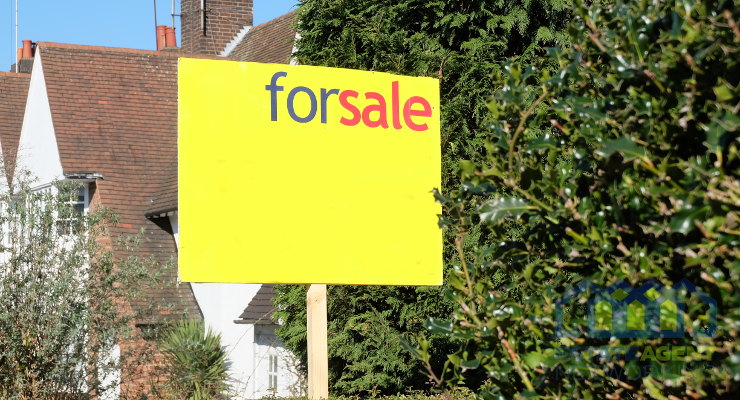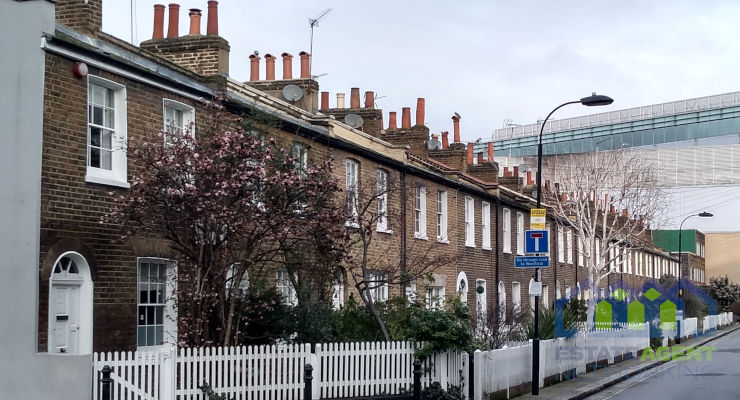2018: A tale of different markets leads to Rightmove forecast of +1%
- National average forecast of 1% growth in new seller asking prices in 2018 as the net result of upwards price pressures in some sectors and locations mitigated by negative price forces in others:
- Price growth in lower and middle sectors of the market set to continue in 2018, with Rightmove forecasting average growth of 3% for typical first-time-buyer and 2% for second-stepper properties
- Top of the ladder properties, predominantly influenced by ongoing re-adjustment in London and its commuter-belt, predicted to fall by an average of 2%
- 2017 finishes up with annual rate of +1.2%, with December seeing a seasonal price fall of 2.6% (-£8,178) in the price of property coming to market
Overview
Different speeds for different markets are set to continue in 2018. Shortages of suitable properties for sale in some sectors and locations will result in upwards price pressure in new seller asking prices in those areas. However, Rightmove forecasts that this will be mitigated by new sellers having to trim their initial price aspirations in less buoyant parts of the market, resulting in an overall increase of 1% in 2018. This marginal annual growth rate would represent a slightly slower pace of price rises than the 1.2% recorded this year, and would be the lowest yearly increase since the 0.8% rise recorded in 2011.
Miles Shipside, Rightmove director and housing market analyst comments: “Home owners have had a good run, with every year since 2011 seeing a rise in the price of property coming to market, and the national average rise over those six years being 30.9%, equivalent to 4.6% per year. 2018 will continue the 2017 trend by being a real mixed bag of different price pressures both up and down, but the net result is that we forecast another year of a slowing in the pace of price rises. The peak in the cycle of rising prices was 2015’s annual jump of 7.4%. The following year saw price growth more than halve to 3.4%, while 2017 is finishing up at 1.2%. Increasingly stretched buyer affordability, exacerbated as intended by tighter lending criteria and increased stamp duty for second-home-owners, is taking its toll on upwards price pressure. It is aided by a slowdown in the higher-end markets, with the influence of a re-adjusting London being a weighty factor on the national averages. The overall price growth slowdown that we are predicting for 2018 masks a somewhat tangled web of differing supply and demand factors, some favouring price increases and some in favour of price falls.”
Factors in favour of prices increasing:
- Overall housing supply remains historically tight with restrained expansion of house-building
- Estate agents’ stock of property for sale is tight overall, especially further north with demand exceeding supply
- Historically cheap mortgage rates, with first-time-buyers’ deposits aided by family and lower stamp duty
- Transaction numbers remain robust as life-stage and lifestyle moves still need satisfying
- Rightmove forecasts the price of property coming to market in the typical first-time-buyer sector (properties with two bedrooms or fewer) to increase by 3% and second-stepper sector (properties with three bedrooms and four bedrooms except four bedroom detached) to increase by 2% in 2018
Factors in favour of prices falling:
- Stretched affordability failing to be addressed by muted wage growth
- Continuing reluctance of discretionary and typically higher-end movers during periods of uncertainty, with re-adjusting London influence being a weighty factor
- Rightmove forecasts upper sector properties (top of the ladder sector comprising four bedroom detached and all properties with five bedrooms or more), influenced by ongoing re-adjustment in London and its commuter belt, to fall by an average of 2% in 2018.
Shipside summarises: “The mass market remains robust, with around 85% of transactions involving first-time-buyer and second-stepper properties. Demand is driven by many factors but two are key and over-ride the backdrop of uncertainty. Firstly, the desire to get onto the housing ladder, which is financially influenced by the bank of Mum and Dad, the rising cost of renting, and the limited time window between the effective zero-rating of first-time buyer stamp duty and prices increasing in response. Secondly is the need for space and schooling for growing families which is hard to postpone. Demand for the right property in these sectors will nudge up prices, with the more buoyant northern half of the country seeing most of the price rise hotspots. In contrast many sellers in the upper end of the market will struggle unless they price more aggressively to tempt wealthier but more hesitant buyers. While the minority 15% of the market volume is the upper end with at least four bedrooms, it wields disproportionate influence on national averages as the higher prices mean that every percentage point drop has a greater effect.”
This month sees the price of property coming to market fall by 2.6% (-£8,178), leaving 2017 with an annual rise of 1.2%. The average fall at this typically quieter time of year has been 2.1% over the last seven years, and this slightly greater dip is in fact the largest monthly fall for five years. It is symptomatic of the more challenging market some sellers find themselves in and it is also a factor in Rightmove’s slightly more cautious prediction for 2018 compared to this year.
Agents’ Views
Mark Manning, Director of Manning Stainton in Leeds, Harrogate, Wetherby and Wakefield said: “Demand across the lower and middle markets remains healthy but there is a little price resistance starting to be felt in various pockets of the region. We’ve done some research and are pleased to see a 6% increase in the number of first-time buyers making offers to buy their first property this year. What’s even more impressive is that this number is 37% higher than in 2013 which goes some way to proving the government’s intervention is bearing fruit. The upper quartile has shown promise this year but I cannot help but feel with Brexit round the corner and all the uncertainty surrounding, that this part of the market will remain somewhat unpredictable. That being said against all of this remains a shortage of supply which should allow for further price growth over the next year.”
Nick Leeming, Chairman at Jackson-Stops said: “The average UK house price will likely remain static across 2018, with punitive stamp duty levels and political and economic uncertainty weighing in on the residential property market. The escalating cost of moving house means home owners are more likely to stay put and renovate next year, when they might otherwise have moved, particularly with the interest rate rise rendering mortgage deals less favourable. This is the general picture for several of our regions including London and the South East. Where people are moving, smaller, family-friendly homes are likely to fare well, propped up firmly by the lower end of the market and increased competition between young families and downsizers. Bucking this trend, our branches in the West Country foresee an increase in average prices in the middle market, meaning homes valued at £500,000 to £1 million, with some predicting 4% growth next year. The Cotswolds will continue to attract families, with those previously based close to the capital increasingly happy to commute further several days a week and work from home in order to achieve their desired lifestyle.”









